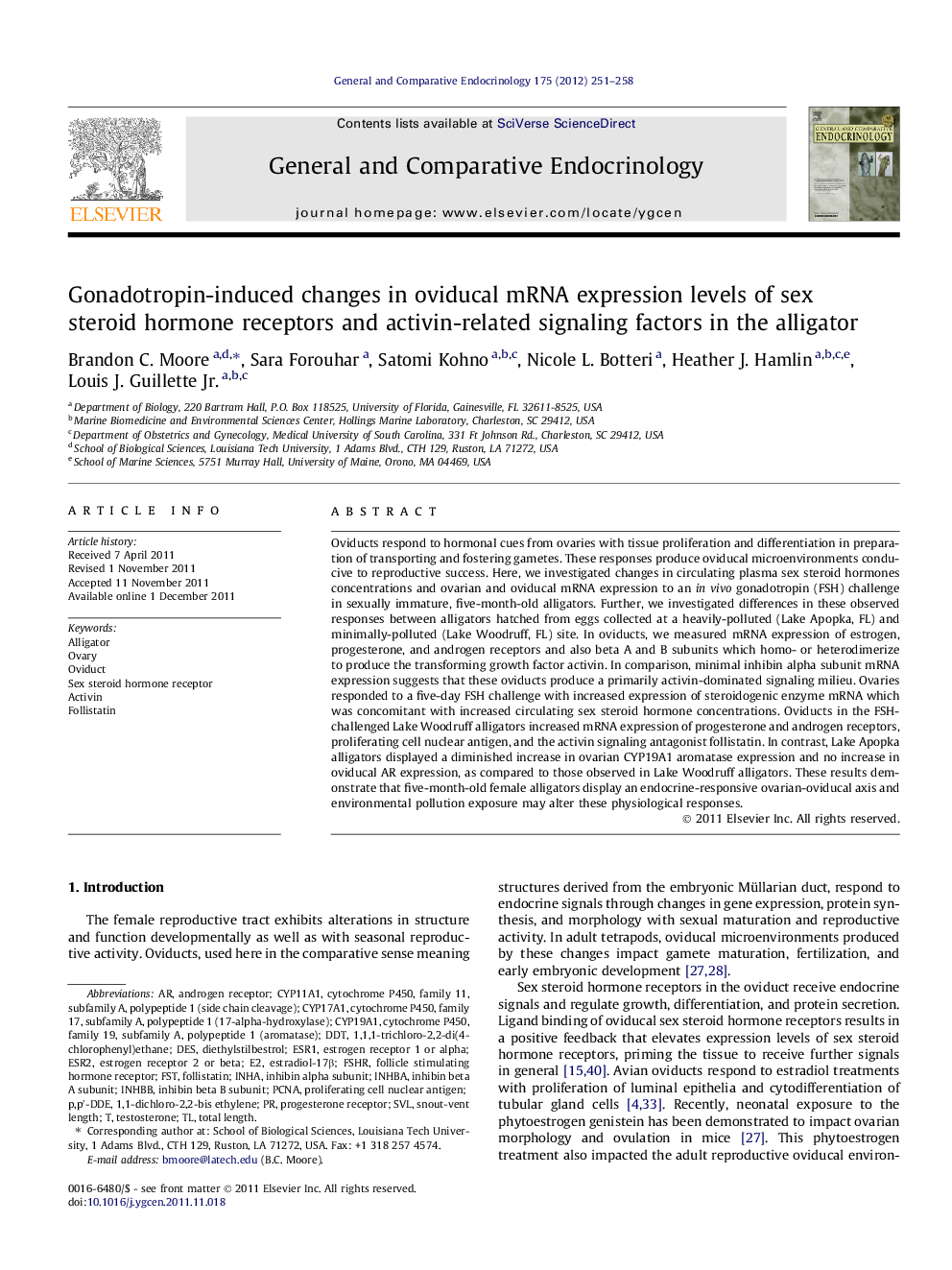| Article ID | Journal | Published Year | Pages | File Type |
|---|---|---|---|---|
| 2800756 | General and Comparative Endocrinology | 2012 | 8 Pages |
Oviducts respond to hormonal cues from ovaries with tissue proliferation and differentiation in preparation of transporting and fostering gametes. These responses produce oviducal microenvironments conducive to reproductive success. Here, we investigated changes in circulating plasma sex steroid hormones concentrations and ovarian and oviducal mRNA expression to an in vivo gonadotropin (FSH) challenge in sexually immature, five-month-old alligators. Further, we investigated differences in these observed responses between alligators hatched from eggs collected at a heavily-polluted (Lake Apopka, FL) and minimally-polluted (Lake Woodruff, FL) site. In oviducts, we measured mRNA expression of estrogen, progesterone, and androgen receptors and also beta A and B subunits which homo- or heterodimerize to produce the transforming growth factor activin. In comparison, minimal inhibin alpha subunit mRNA expression suggests that these oviducts produce a primarily activin-dominated signaling milieu. Ovaries responded to a five-day FSH challenge with increased expression of steroidogenic enzyme mRNA which was concomitant with increased circulating sex steroid hormone concentrations. Oviducts in the FSH-challenged Lake Woodruff alligators increased mRNA expression of progesterone and androgen receptors, proliferating cell nuclear antigen, and the activin signaling antagonist follistatin. In contrast, Lake Apopka alligators displayed a diminished increase in ovarian CYP19A1 aromatase expression and no increase in oviducal AR expression, as compared to those observed in Lake Woodruff alligators. These results demonstrate that five-month-old female alligators display an endocrine-responsive ovarian-oviducal axis and environmental pollution exposure may alter these physiological responses.
► Five month-old alligators display an endocrine-responsive ovarian–oviducal axis. ► FSH increased circulating estradiol and testosterone and ovarian and oviducal mRNAs. ► Pesticide exposure correlated to differences in CYP19A1 and AR mRNA levels.
